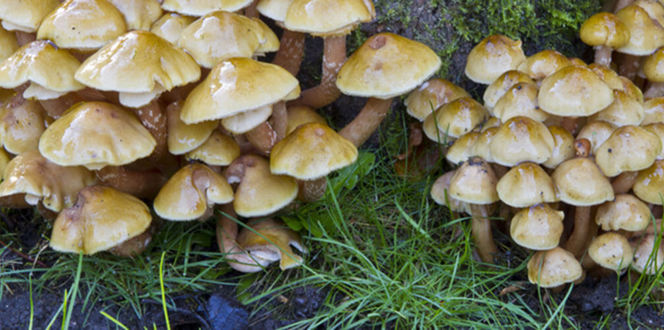Turkey Tail Mushroom Description:
Turkey tail is a polypore mushroom that gets its name from the variety of colors and shape that resemble the tail feathers of wild turkeys. The surface of the cap can range in size and has a leather texture and rings of different shades of blacks, browns, whites and creams. It normally grows in layers, and is not very thick, only a few millimeters at most. There tend to be many fruiting bodies in one spot. The underneath is porous and white/light brown in color.
Hosts:
Turkey tail is a very common mushroom found almost anywhere where there is decomposing wood.
Biology & Symptoms:
This mushroom causes white rot of the sapwood and can add to the decomposition process. It plays a large role in returning nutrients to the soil in woodlands. Some can be found growing year-round, but most thrive in fall and winter while they’re releasing spores.
Management:
Turkey tail, much like other mushroom species, grows on dead wood. If found on landscape trees, they may be a sign of internal decay that could be dangerous. If the decay is extensive, the tree may be at high risk of failure. If turkey tail is found on landscape trees, they should be tested for soundness. Severely decaying trees may be recommended for removal. Consult your local arborist to see what options are available for your trees with turkey tail.





